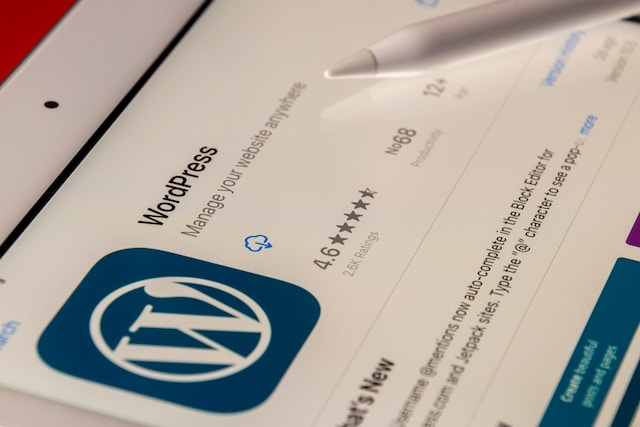Google Business Profiles are Ending: How to Migrate Your Website to WordPress
The internet is constantly changing, take it from me. I’ve been working in the digital marketing world since BEFORE SEO strategy included keyword stacking. An upcoming change is going to have a significant impact on the way you market your business – if you built your business website through Google Business Profile.
Google has decided to retire its Business Profile websites. The change began taking effect March 1. If you find yourself pondering the next move, look no further. Here are some tips on how to migrate your website to WordPress.
With Google Business Profiles on the Way Out, Will Your Site Be Affected?
How many are slated to be shut down? 21.7 MILLION! Is your business website one of them? Google’s Help site can give you more specific information on what’s happening.
It’s important to note, your Google Business Profile isn’t going away. Rather, it’s the websites built with that platform that are getting curtained. This latest development could severely hamstring your business if you don’t have an established website.
What do the website development experts here at Grand River Agency recommend? WordPress is the answer!
How to Move Your Business Website to WordPress
We’ve always appreciated WordPress for a variety of reasons. WordPress websites on a self-hosted platform are typically the most well-rounded solution – great for content management, SEO improvements, scalability and security. It’s a flexible platform that’s constantly growing, with the kind of features you need to improve your search engine performance. Savvy business owners like you know what this means for gathering website traffic, leads and customers.
(Related reading: WordPress Maintenance Checklist: Keeping Your Website Running Smoothly.)
You don’t want to have your website sunsetted simply because Google doesn’t want to be in the website business anymore.
Why is Google Discontinuing Business Profile Websites?
The answer to this question, only the Google execs sitting in their posh boardroom know. Our best guess? The time and cost of maintaining the sites and keeping security up to date was not worth any revenue that the sites brought into the corporation.
Google has a long history of mothballing projects. Remember Google+ and Google Domains? Those didn’t get too far. (Check out Killed by Google to see more projects that Google has discarded over the years.)
What Does the Discontinuation of these Sites Mean for You?
It’s a reminder that it’s imperative that you make a website you own and control. External platforms like Google or Facebook are not always dependable. They can change their Terms of Service or even discontinue their service at any time. Then – POOF! – the site you’ve built is gone.
How to Migrate Your Site from Google Business Profile
1. Backup Your Current Site
Google Business Profile Sites does not allow you to automatically migrate your site. This is going to make this process a bit tedious. You need to save all of your images and media, and copy the text from your site to a document. Make sure that you get the information from each page on your site.
Keep it organized!
2. Stake Your Claim
You’ll need a domain name and a web host. Use a site like GoDaddy or Name.com to purchase your domain and point it to your web host. There are many web hosts out there that can support a WordPress install.
(Fortunately, at Grand River Agency, we offer state of the art, affordable web hosting with included SSL certificate and maintenance! We would be more than happy to talk to you about hosting.)
When we talk about WordPress, we’re referring to a site that uses the WordPress software on a web host. There are two sites: WordPress.com and WordPress.org. The .org site is our starting place for this. This provides the files you need to download WordPress for your site. Many web hosts offer automatic WordPress installs as part of their package.
3. Welcome to WordPress
Once installed, this is where you can build out your website content as “Pages” on your site. You’ll need a theme, and there are a number of free themes available that you can customize that are built into WordPress. We recommend Themify for a more robust and attractive website. (We use Themify for most of the sites that we build.)
4. Content Migration
Take a look at the content that you’ve pulled down from Google Business Profile Sites. You’re going to want to go through it once with an editor’s eye. Does the language use effective 21st-century digital storytelling to honor your brand?
Is it clearly written and compelling? Does it accurately describe the work you do, provide your offer to your website visitors, and clearly call them to action? If so, you’re ready to start plugging that content into your new WordPress website.
5. Search Engine Optimization
While you’re getting your content on the site, make sure that it’s properly formatted for SEO. There are a number of tools to help with this, including the robust YOAST SEO plugin. You can pay for premium, but the free version of this plugin is still great. It will do most of what you need to get your website SEO ready.
It will walk you through the steps to make sure each page on your site is formatted correctly and effectively uses keywords to improve search engine standing. Please note, though, the best way to keep your website relevant to search engines is to keep updating your site with new information and content. Keyword-optimized blog content is always the best way to keep the SEO ball rolling.
6. Let Google Know
Once you have the new site ready to go, go back to your Business Profile on Google, hit “Edit Profile” and then take out the old link, and paste in your URL to the new website.
The Google Business Profile Aftermath: Ready to Migrate Your Business Website to WordPress?
If any of this seems overwhelming, don’t worry! We’re here to help. Get in touch with us today.

Vice President of Client Success, Grand River Agency
Josh is an expert multimedia professional with more than 25 years of experience in graphic design, digital media content production and community outreach. While working for several news and digital media agencies, as well as his own entrepreneurial endeavors, he has built and designed hundreds of websites and other forms of promotional content.
Josh has produced content for print, radio, TV and digital news and advertising firms. He has a keen eye for the
aesthetic, as well as a commitment to organizational visions. Josh has authored 12 books on self-improvement,
faith and career success.





